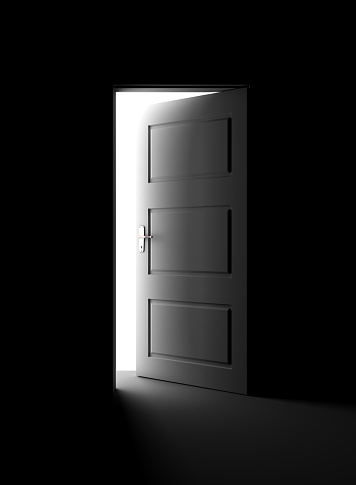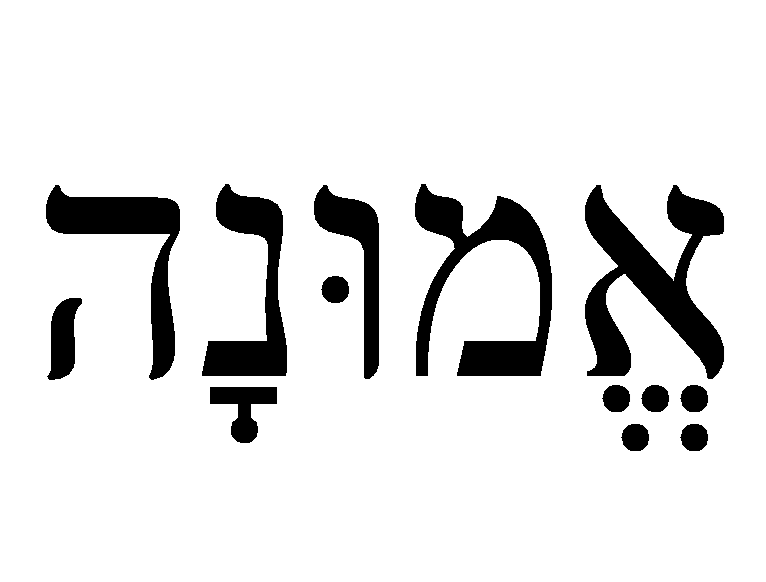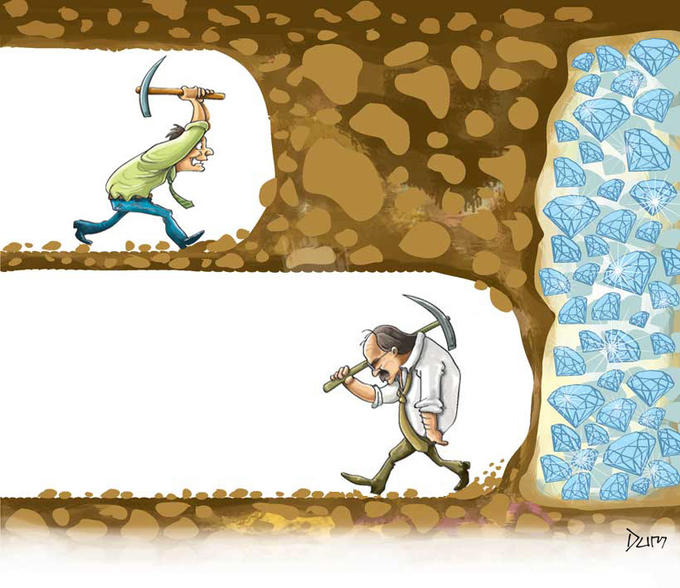On the Origin of Hide and Seek

Pesach is just around the corner and all of our thoughts turn to redemption—the ten plagues of deliverance, the exodus from Mitzraim, the splitting of the sea, the annihilation of our oppressors and enemies, arrival at Har Sinai, the unity of the nation encamped at the foot of the mountain, etc. We were in a state of extreme joy and euphoria as we anticipated the giving of the Torah.
But something unexpected happened (Shemot 20:15): וְכׇל־הָעָם רֹאִים אֶת־הַקּוֹלֹת וְאֶת־הַלַּפִּידִם וְאֵת קוֹל הַשֹּׁפָר וְאֶת־הָהָר עָשֵׁן וַיַּרְא הָעָם וַיָּנֻעוּ וַיַּעַמְדוּ מֵרָחֹק (All the people saw the thunder and lightning, the sound of the shofar, and the mountain smoking; and the people saw and they trembled and stood at a distance). The last thing they expected was to witness a spectacle that terrified them. They were afraid of dying and wanted Moshe to bring the Torah to them. Moshe told them not to be afraid, and that it’s all just a big test. Hashem wanted them to fear Him, not the ‘scary spectacle.’ However, the people didn’t budge. They weren’t going anywhere. On the other hand, Moshe was drawn into the darkness (Shemot 20:18): וַיַּעֲמֹד הָעָם מֵרָחֹק וּמֹשֶׁה נִגַּשׁ אֶל־הָעֲרָפֶל אֲשֶׁר־שָׁם הָאֱלֹקִים (The people stood at a distance but Moshe was drawn near to the thick darkness where G‑d was). It is interesting that the final test before receiving the Torah was to experience thick darkness—a place where the path forward would be obscured, where everything would appear distorted, a reality in which nothing would make any sense—a state of confused existence where even the ‘laws of nature’ would cease to exist. Why was this necessary, and what can we learn from this?
When we arrived at Har Sinai, we were very excited, and we enthusiastically said (Shemot 19:8): כֹּל אֲשֶׁר־דִּבֶּר יְיָ נַעֲשֶׂה (All that Hashem has spoken, we will do). But it is also written (Shemot 19:17): וַיּוֹצֵא מֹשֶׁה אֶת־הָעָם לִקְרַאת הָאֱלֹקִים מִן־הַמַּחֲנֶה וַיִּתְיַצְּבוּ בְּתַחְתִּית הָהָר (Moshe took the people from the camp to meet G‑d, and they stood in the tachtit of the mountain). Literally, this means that they stood at the foot of the mountain, but our Sages learned something much deeper about what was really going on (Avodah Zarah 2b): ואמר רב דימי בר חמא מלמד שכפה הקב"ה הר כגיגית על ישראל ואמר להם אם אתם מקבלין את התורה מוטב ואם לאו שם תהא קבורתכם (Rav Dimi bar Chama said that [the word tachtit] teaches that the Holy One, blessed be He, overturned the mountain like a barrel over Yisrael and said to them, If you accept the Torah, great! But if not, there [under the mountain], will be your burial). In other words, the Torah was accepted only through an aspect of coercion. (And as is known, it wasn’t until the days of Mordechai and Ester that we accepted the Torah completely out of love.) So, on the one hand, we were very enthusiastic, excited and intent on doing everything Hashem said, but on the other hand, we were hesitant and afraid. How can we explain this contradiction?
Let’s bring up another contradictory idea. The verse (20:18) said that G‑d was in the thick darkness [הָעֲרָפֶל, ha-arafel]. What was G‑d doing in the darkness? Isn’t the Torah light (Mishlei 6:23)? And if Moshe was going to receive the Torah, why was he entering into the darkness to receive it? Although it seems bizarre and paradoxical, both are equally valid realities: the Torah is light and Hashem dwells in the darkness. As the Baal Ha-Turim points out on that verse, the gematria for הָעֲרָפֶל is identical to the gematria for the שכינה [Shechinah, the Divine Presence], i.e. 385. This is not coincidental. This is hidden a secret in the Torah that teaches us that when Moshe was drawn near to the thick darkness, he was being drawn near to the Shechinah. The darkness was exactly where Hashem was to be found. We can also read about this perplexing truth elsewhere. For example, David ha-Melech said (Tehillim 18:12): יָשֶׁת חֹשֶׁךְ סִתְרוֹ (He made darkness His concealment). He also said (Tehillim 97:2): עָנָן וַעֲרָפֶל סְבִיבָיו (Cloud and the arafel surround Him). And Shlomo ha-Melech, at the dedication of the Beit ha-Mikdash said (Melachim Aleph 8:12): יְיָ אָמַר לִשְׁכֹּן בָּעֲרָפֶל (Hashem said [that He would] dwell in the arafel).
Instead of simplifying the matter, we now have two paradoxes! Paradox #1: the people were enthusiastic yet terrified and pulled back. Paradox #2: Hashem who is light and whose Torah is light dwells in thick darkness. Can there be a single explanation for these two apparently contradictory and paradoxical ideas?
When someone chooses to do teshuvah on some particular aspect of his life or even after chasing meaningless pursuits throughout his entire life, he often experiences something for which he was completely unprepared. His life may have been going along quite smoothly up to this point; yet, the moment he commits to walk in the ways of Hashem and to purify himself, everything seems to fall apart. He may encounter many obstacles, and life as a whole may get extraordinarily difficult, being overrun by many setbacks. He begins to wonder if Hashem is even interested in his teshuvah. After all, he may have done some terrible things, maybe even many terrible things. Perhaps Heaven is simply rejecting him, plain and simple, G‑d forbid. Such a person’s enthusiasm may wane and he may become despondent or depressed, possibly even abandoning the thoughts of teshuvah that he originally had, G‑d forbid. However, if he understood the dynamics of what was happening and that Hashem wasn’t rejecting him, he wouldn’t have come to such a state. So what is going on? Why do things like this seem to happen so often?
When we sin, we bring upon ourselves (and upon others) judgments, i.e. indictments for crimes committed against the King and His kingdom. These indictments come from the Attribute of Justice [מִדַּת הַדִּין, middat ha-din] which rightly accuses us and denounces us. Not only that, but obstacles are often set up preventing us from walking in Hashem’s ways. Why should we be permitted to waltz effortlessly into a sublime relationship with Hashem when we did what we did, defiling ourselves and ruining His world? The middat ha-din is not unfair; it is just. After all, it is written (Tehillim 37:28): כִּי יְיָ אֹהֵב מִשְׁפָּט (For Hashem loves justice).
However, there is also the Attribute of Mercy [מִדַּת הַרַחֲמִים, middat ha-rachamim] which stems from the fact that Hashem loves kindness, as it is written (Michah 7:18): כִּי־חָפֵץ חֶסֶד הוּא (For He desires chesed). So on the one hand, the Holy One, blessed be He, loves justice, yet on the other hand, He desires chesed and loves Yisrael, His beloved children, even after they sin, as it is written (Malachi 1:2): אָהַבְתִּי אֶתְכֶם אָמַר יְיָ וַאֲמַרְתֶּם בַּמָּה אֲהַבְתָּנוּ הֲלוֹא־אָח עֵשָׂו לְיַעֲקֹב נְאֻם־יְיָ וָאֹהַב אֶת־יַעֲקֹב (I have loved you, said Hashem, but you said, How have You loved us? Isn’t Esav a brother to Yaakov, declares Hashem, yet I love Yaakov).
In short, there must be din and there must be rachamim. But what’s the solution for this paradoxical situation? Can both co-exist?
The solution is that which is stated explicitly in the Zohar Ha-Kadosh (Emor 99b): וְאָף עַל גַּב דקב"ה רָחִים לֵיהּ לְדִינָא כד"א כִּי אֲנִי יְיָ אוֹהֵב מִשְׁפָּט נֶצַח רְחִימוֹי דִּבְנוֹי לְרֶחִימוּ דְּדִינָא (Even though the Holy One, blessed be He, loves din, as it says [Yeshaya 61:8], ‘For I, Hashem, love justice’, the love of his children trumps the love of din). If only we could hold this truth in the forefront of our minds constantly, imagine how much anguish and heartache we could avoid in life! Even though Hashem loves din, he loves us even more. As a result, although He doesn’t push away din, for He created it and agrees with it, and He knows that we are not worthy to drawn near to Him for the abundance of our sins, what does He do? He places his middat ha-rachamim within his middat ha-din. He hides in the midst of the darkness! He’s not rejecting us. He’s not indifferent to our teshuvah and to our efforts to draw closer to Him. It’s as if He’s playing hide and seek, and He wants us to find Him in the midst of all the so-called obstacles, as it is written (Yeshaya 55:6): דִּרְשׁוּ יְיָ בְּהִמָּצְאוֹ (Search for Hashem when He can be found). After all, the truth is that there are no such things as obstacles. They’re all just illusions, as stated explicitly in Likutei Moharan 115: כִּי בֶּאֱמֶת אֵין שׁוּם מְנִיעָה בָּעוֹלָם כְּלָל (For in truth, there is no obstacle in the world at all). Do we get it? Do we see why the so-called obstacle isn’t really an obstacle at all? It is because Hashem arranged them and hid Himself within them; therefore, they are the path to Hashem. And if they are the path to Hashem, they’re not obstacles, are they? Yes, they are challenges and difficulties, but they don’t prevent us from accessing Hashem. On the contrary, they are the very route to Hashem.
This being the case, why was Moshe the only one who was drawn into the darkness? It is because not everyone has this understanding, or even if they do ‘know it to be true’, they don’t ‘feel it to be true’. And the only one who had this knowledge, this da’at, was Moshe Rabbeinu. Therefore, he was drawn into the darkness—literally. He was compelled to enter the darkness, not for himself, but on behalf of the people, to bring the Torah out to them. Therefore, if we are to find Hashem in every situation in life, especially during the difficult times, we need da’at. That’s why it’s the first berachah of request in the Shemoneh Esrei. We need it like we need air to breathe. Without it, we’re constantly falling into the traps laid by the Sitra Achra to ensnare us. But with da’at, we can recognize the trap at the moment we encounter it, and know and feel that it’s just a test—that Hashem is there and that what He really wants is not for us to become entrapped but to draw closer to Him. It is as R' Nachman writes (L.M. 115): וּמִי שֶׁהוּא בַּר דַּעַת הוּא מִסְתַּכֵּל בְּהַמְּנִיעָה וּמוֹצֵא שָׁם הַבּוֹרֵא בָּרוּךְ הוּא (Someone who has da’at, he looks into the obstacle and finds the Creator, blessed be He, there). And if Hashem is there, then that’s where we need to go.
All of this may seem like a rather convoluted way to draw close to Hashem. Couldn’t He have designed the system another way, in a clear and direct way? He has unlimited abilities, after all. So how come He designed it in a way that seems like we’re all involved in some kind of surreal game of hide and seek? To answer that question we need to go back to the Garden. What did Adam do after he sinned? It is written (Bereshit 3:9-10): וַיִּקְרָא יְיָ אֱלֹקִים אֶל־הָאָדָם וַיֹּאמֶר לוֹ אַיֶּכָּה׃ וַיֹּאמֶר אֶת־קֹלְךָ שָׁמַעְתִּי בַּגָּן וָאִירָא כִּי־עֵירֹם אָנֹכִי וָאֵחָבֵא (Hashem G‑d called to the man and said to him, Where are you? He said, I heard Your voice in the garden, and I feared because I am naked, so I hid). Adam, i.e. we, initiated the game, not G‑d. And since we hid from G‑d, He hides from us. It is middah k’neged middah. In His infinite wisdom, G‑d knows that the only way for us to rectify this sin is to replace fear with emunah and enter into the thick darkness. Then, instead of Hashem asking us אַיֶּכָּה (Where are you?), we will ask Him אַיֶּכָּה? This is the ultimate tikkun.
May we merit to find Hashem in all of our challenges and difficulties in life and never abandon the hope of finding Him in the midst of our thick darkness.






